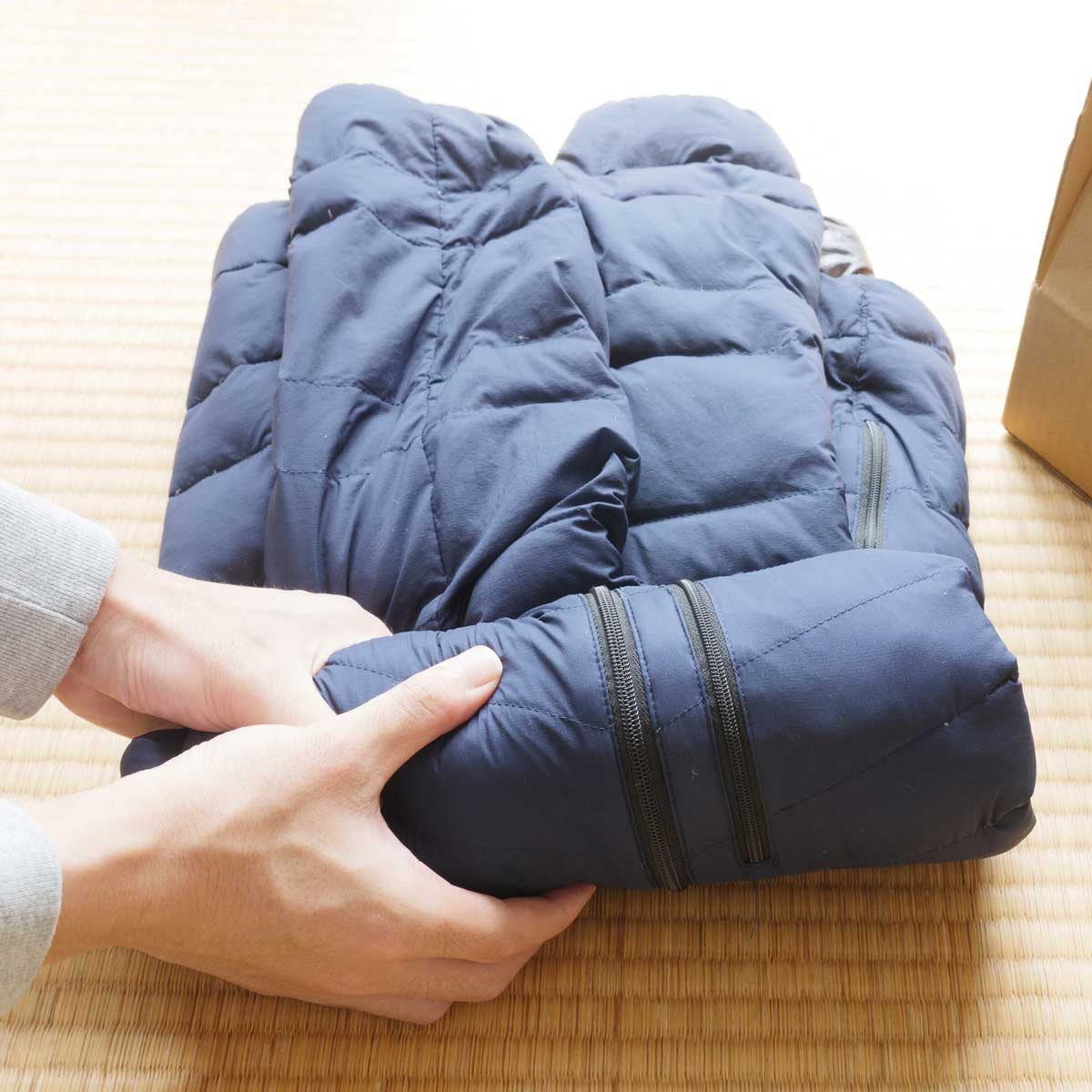Proper care and at least one seasonal wash helps your down jacket keep its warmth through many winters to come.

The Expert Way to Wash a Down Jacket at Home

When it comes to a lifesaving need for warmth, adventurers — including pioneering Mount Everest climbers in the 1920s — have turned to down coats.
“[Down is] so lofty and traps so much air,” says Patric Richardson, The Laundry Evangelist and owner of Mona Williams, a laundry and designer vintage clothing store at Minnesota’s Mall of America. “That’s what keeps it warm. And it’s so lightweight.”
If you already own a down coat or are considering buying one, here’s what makes down stand out, and how to make sure it keeps you warm for decades.
On This Page
What Is Down?
Down refers to the soft, almost weightless under-feathers that help keep geese and ducks warm. Duck down is often the most affordable down, followed by goose down and premium eiderdown, from Eider ducks.
How Does Down Work?
Tiny air pockets between the delicate feathers trap body heat while simultaneously insulating you from frigid air. Baffles — stitched pockets of feathers — create the “puffy jacket” look and help feathers stay evenly distributed throughout the coat.
Spot Cleaning Down
If you get a stain on your down jacket, spot-clean it or pre-treat it before a more thorough wash. Richardson advises using a blend of water and vinegar to break down oil or fat from food stains or grease stains from hands. Then scrub it with a soft brush and soap, such as Fels Naptha laundry soap bar.
How to Wash a Down Coat
Step One: Load the Washer
Put your down coat right-side out into a front-loading washing machine, which has a gentler motion that’s better for cleaning down. If you don’t have a front-loader, Richardson said it’s a good reason to bake brownies for a friend and borrow their front-loading washer for the afternoon.
Step Two: Select the Right Soap
Richardson recommends washing down jackets with clean-rinsing laundry soap flakes or soap specifically for washing down, which can be found at most outdoor gear stores. Most modern laundry detergents leave behind a slight coating so their scent lingers on clothing, which can affect the feathers’ ability to stay fluffed and insulating.
Step Three: Dial Up a High Spin
For settings, Richardson recommends a quick wash using warm water, followed by a cold rinse and high spin. If you choose a delicate cycle, make sure it has a high spin option to remove as much water as possible. Hang your down coat on a sturdy hanger, or drape it across a drying rack in the laundry room or tub to air dry.
Step Four: Toss with Tennis Balls
When your down coat is dry, toss it into a dryer on a heat-free air-fluff cycle for 15 to 20 minutes with three tennis balls. (Dryer balls also work, but springy tennis balls provide a superior bounce power for fluffing up feathers.)
While a cotton-covered feather pillow or down comforter can handle dryer heat, that heat can degrade a coat’s polyester or nylon shell and any waterproofing treatment, Richardson says.
How Often to Wash a Down Coat
“Wash [your down jacket] regularly — at least once a year — even if you don’t wear it often,” Richardson says. “You don’t want the dirt and dust to settle into the feathers.” Dirt and dust deteriorate feathers’ ability to insulate. If a jacket’s outer shell and down are well cared-for, he says, a down coat can last 30 years.
Cover Down Coats in Storage
During the off-season, cut a hole in an old bedsheet and drape it over your down jacket on a hanger. The sheet protects your down coat from dust but is more breathable than plastic. If you’re worried about moths, Richardson suggests tucking a cedar block into the pocket.
Next: Learn how to wash a sweater.




















